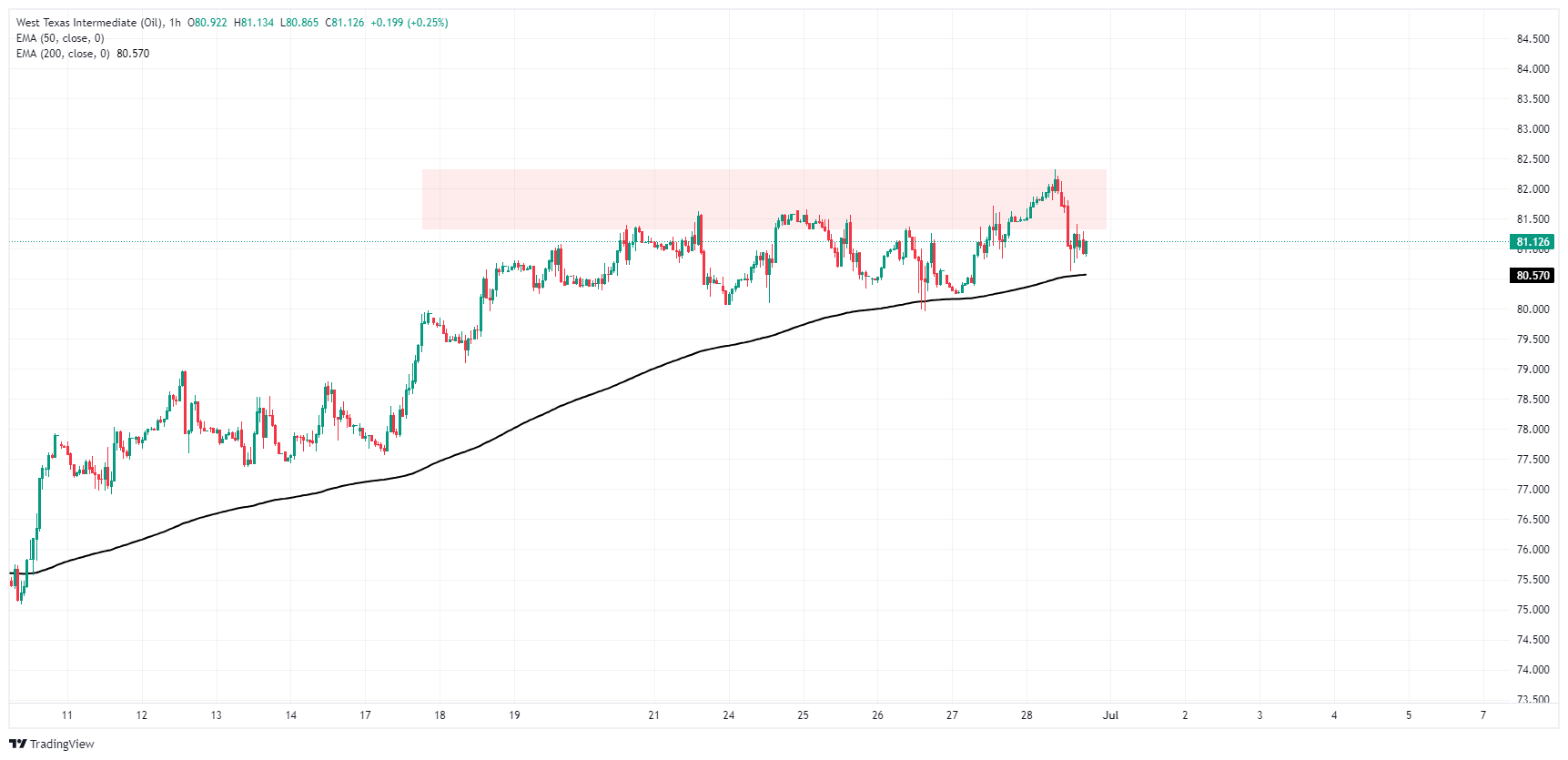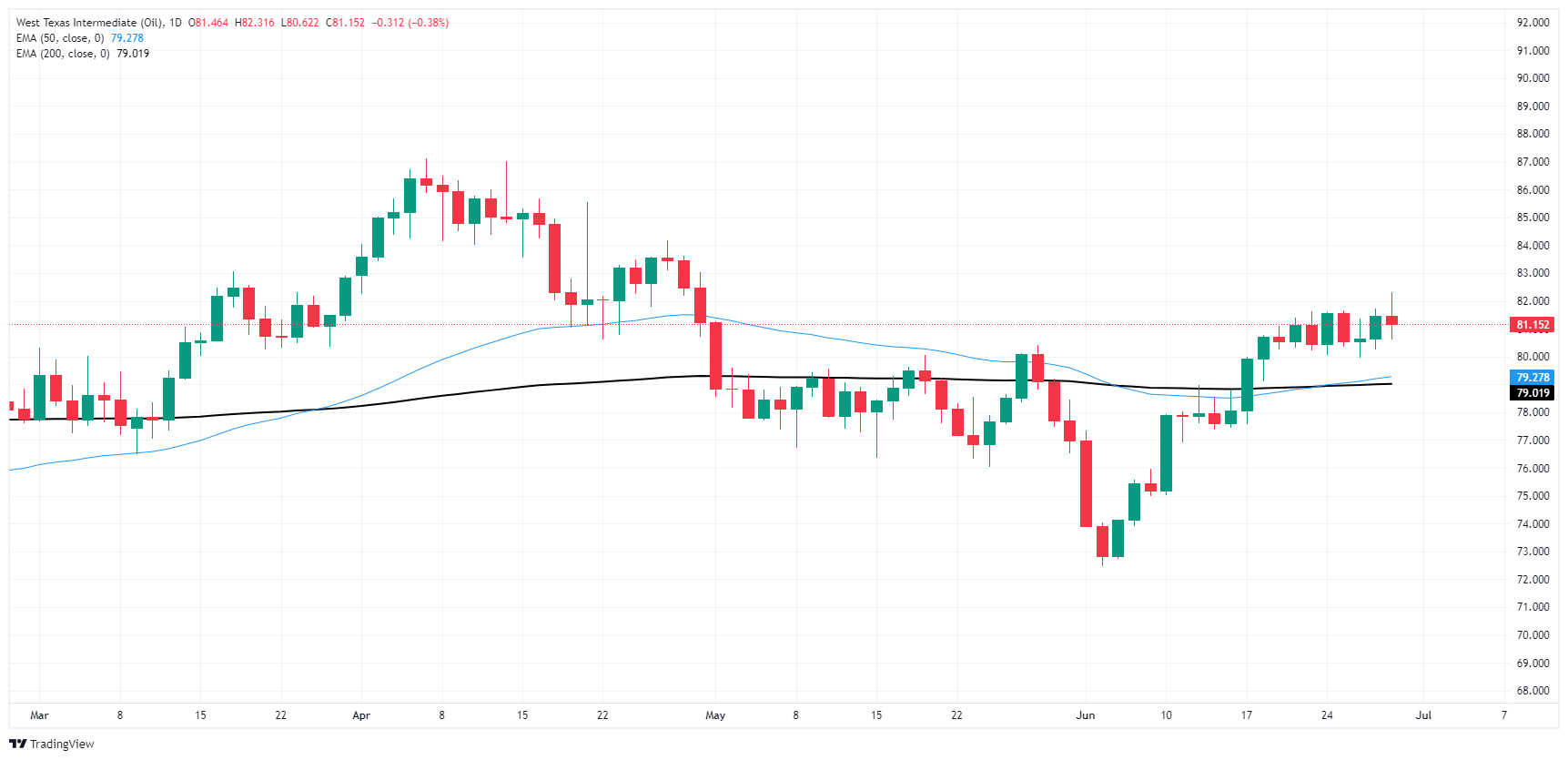- WTI returns below $81.00 as bullish momentum is cut.
- US crude oil initially rose on Friday but quickly fell to familiar levels.
- The EIA noted that U.S. crude oil production hit new highs in April.
He West Texas Intermediate (WTI) rose to a new eight-week high on Friday as risk appetite in the broader market increased, but investor sentiment moderated during the US market session, dragging crude oil prices to a new low of day. The Energy Information Administration (EIA) noted that despite a slight increase in overall fossil fuel demand, gasoline demand declined further and the U.S. continues to see near-term highs in total production.
Continued market hopes for an increase in overall crude oil demand during the summer continue to run up against a stark reality, as consumer demand for fossil fuels consistently falls short of market forecasts.
According to the EIA, a rise in U.S. crude oil and petroleum products rose to its highest level since December, but increases in U.S. crude oil production, which also rose to December peaks of 13.25 million bpd in April, are more than enough to offset supply reductions. The EIA also noted an overall decline in consumer-level gasoline demand, which fell to 8.83 million bpd in April, the lowest figure since February.
WTI Technical Outlook
US WTI crude oil hit a new eight-week high of $82.31 on Friday before retreating into bearish chart territory for the final session of the trading week, closing the week struggling with the $81.00 area. The near-term chart turmoil has WTI under firm downward pressure from a supply zone above $81.50 per barrel.
Despite the frothy intraday price action, the daily candlesticks remain trapped in a short-term consolidation as WTI struggles to hold onto bullish territory north of the 200-day exponential moving average (EMA) at $79.00.
WTI hourly chart
WTI daily chart
WTI oil
WTI oil is a type of crude oil that is sold in international markets. WTI stands for West Texas Intermediate, one of the three main types that include Brent and Dubai crude. WTI is also known as “light” and “sweet” for its relatively low gravity and sulfur content, respectively. It is considered a high-quality oil that is easily refined. It is sourced in the United States and distributed through the Cushing facility, considered “the pipeline junction of the world.” It is a benchmark for the oil market and the price of WTI is frequently quoted in the media.
Like all assets, supply and demand are the main factors determining the price of WTI crude oil. As such, global growth can be a driver of increased demand and vice versa in the case of weak global growth. Political instability, wars and sanctions can disrupt supply and impact prices. Decisions by OPEC, a group of large oil producing countries, are another key driver of price. The value of the US Dollar influences the price of WTI crude oil, as oil is primarily traded in US Dollars, so a weaker Dollar can make oil more affordable and vice versa.
The weekly oil inventory reports published by the American Petroleum Institute (API) and the Energy Information Agency (EIA) influence the price of WTI oil. Changes in inventories reflect fluctuations in supply and demand. If the data show a decrease in inventories, it may indicate an increase in demand, which would push up the price of oil. An increase in inventories may reflect an increase in supply, which pushes down prices. The API report is published every Tuesday, and the EIA report the following day. Their results are usually similar, with a difference of 1% between them 75% of the time. The EIA data is considered more reliable because it is a government agency.
OPEC (Organization of the Petroleum Exporting Countries) is a group of 13 oil-producing nations that collectively decide member countries’ production quotas at biannual meetings. Their decisions often influence WTI oil prices. When OPEC decides to reduce quotas, it can restrict supply and drive up oil prices. When OPEC increases production, the opposite effect occurs. OPEC+ is an expanded group that includes ten other non-OPEC member countries, including Russia.
Source: Fx Street
I am Joshua Winder, a senior-level journalist and editor at World Stock Market. I specialize in covering news related to the stock market and economic trends. With more than 8 years of experience in this field, I have become an expert in financial reporting.







